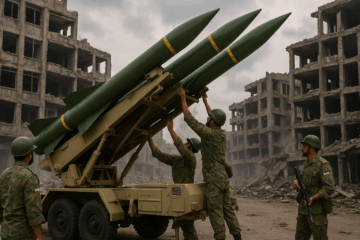David Trachtenberg of the National Institute for Public Policy wrote in 2021 that the withdrawal of American troops from Afghanistan and the resurgence of the Taliban have raised significant concerns about their impact on American credibility, deterrence, and alliances. European allies expressed disappointment and criticism, potentially straining the transatlantic relationship and undermining extended deterrent commitments. Moreover, adversaries such as China and Russia may interpret American withdrawal as a display of weakness, heightening the risk of conflict and aggression in areas like Taiwan.
These challenges suggest two questions. First, does the announcement that the United States will field a new B61-13 nuclear gravity bomb address the perceived weakening of extended deterrence credibility? Second, does the B61-13’s development also effectively signal deterrence credibility to adversaries like Russia and China?
Will the B61-13 Repair US Nuclear Deterrence and Assurances?
The Department of Defense is embarking on a significant endeavor: the development of the B61-13, a modern variant of the B61 nuclear gravity bomb. The project awaits approval from Congress, driven by the imperative to bolster deterrence against potential adversaries while equipping the president with a versatile set of options to address targets formerly assigned to the B83 megaton class nuclear gravity bomb, but at less than half the expected yield.
The foundation of this ambitious project lies in the insights gleaned from the 2022 Nuclear Posture Review. The document sheds light on the expansion and modernization of Russian and Chinese nuclear forces, prompting a recalibration of US nuclear strategy. The cornerstone of this recalibration is a balanced approach that includes investments in deterrence capabilities while concurrently emphasizing a commitment to pursuing arms control measures.
The B61-13’s ability to enhance deterrence across several crucial dimensions is central to its development. Foremost among these is the bomb’s ability to broaden the spectrum of potential targets the United States can strike with the weapon. Its ability to address harder and larger-area military targets poses a formidable challenge to potential adversaries, pushing them to consider an extended array of possible objectives.
This expansion of target sets introduces an element of unpredictability into the calculations of would-be aggressors, thus, aspirationally at least, reinforcing deterrence. The B61-13’s development appears a small step in the return to a nuclear policy based on “calculated ambiguity.” Such a policy may have played an important role in explaining why the Cold War never turned hot.
Moreover, the B61-13 assumes the role of safeguarding the credibility of the United States’ nuclear deterrent by demonstrating American ability to design and field new weapons. Effective deterrence hinges on the perception that a nation possesses the determination and the means to respond effectively to various threats. By elevating its nuclear capabilities, including the development of the B61-13, the United States reinforces the credibility of its response options. Such enhancements discourage potential adversaries from testing the resolve of a nation armed with a potent and adaptable nuclear arsenal.
The B61-13’s provision of tailored response options is critical to note, and a testament to its flexibility. This empowers the president to select a response that is appropriate and proportionate to specific threats, serving as a deterrent by signaling to potential aggressors that the United States can deliver a precise and calibrated response, discouraging reckless actions.
Additionally, the B61-13 improves assurance with allies and partners, underscoring the United States’ unwavering commitment to collective defense. Its inclusion among the array of nuclear capabilities reinforces the assurance that the United States will stand by its allies. Keith Payne of the National Institute for Public Policy wrote, “It is imperative for US and allied security, and for the assurance of US allies, that the United States be capable of deterring and defending against this eccentric rogue power.” This assurance factor discourages potential adversaries from targeting U.S. allies, as they acknowledge the presence of a robust and flexible nuclear deterrent designed to support collective defense efforts. Will the B61-13 announcement alleviate concerns from our allies in the Pacific?
Finally, the B61-13 plays a crucial role in advancing strategic stability. By upholding a credible and adaptable nuclear deterrent, the United States contributes to an environment characterized by predictability and reduced risk of miscalculation or inadvertent escalation in times of crisis. The assurance of a stable and predictable American response fosters strategic stability, discouraging actions that could precipitate conflict or escalation.
The B61-13 should strengthen deterrence by broadening target coverage, preserving deterrence credibility, offering tailored response options, assuring allies, and promoting strategic stability. These interconnected elements collectively enhance the United States’ capacity to deter potential threats and promote international security in an ever-evolving geopolitical landscape.



